Encounter of the first kind – MARCOS and 9 SF
(A Chapter in the book NAVIGATING DANGEROUS WATERS)
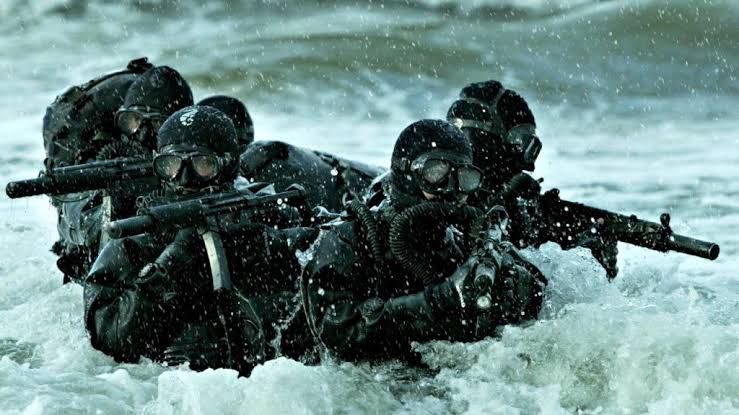
By
Colonel Awadhesh Kumar
It was end October 1987 and the place was Palaly Airbase, near Jaffna in Sri Lanka. The BATS team (Brittto, Awadhesh, Thapa and Sengupta) of 9 SF had just arrived from Udhampur a few days back.
We had done two outings on our missions and had already been baptized by fire. Major Britto and self were about to enter the Operations Branch of HQ 54 Infantry Division to get hold of some maps and probably a new task, when I spotted an officer (with back towards us)chatting with the General Staff Officer Grade 1, Lt Col Sushil Gupta (later DCOAS). What caught my attention was the Naval rank stripes on his shoulder.
As we neared the desk of GSO1 and greeted him, the naval officer turned to have a look at us. Both of us were equally surprised and happy and displayed our reactions simultaneously. After all it was the first encounter between the MARCOS and the 9. The officer was Lt Cdr Rajiv Wadera of 51 NDA course, Echo Squadron, my squadron. I was his junior of 52 NDA. He had also been the Cadet Sergeant Major in his sixth term. We not only shook hands but also displayed all the emotions of meeting after nearly 11 years. He had passed out in Dec1976 and thereafter we had never met.
Next I introduced him to Major John D Britto who was a Direct Entry Officer of the 61 IMA course i.e. same course as 51 NDA.
We then started exchanging notes like all ex NDAs do, when they meet after such a long time. He was presently not serving with any of the Landing Crafts or other ships of the Navy deployed with IPKF but was with the Marine Commando Force or the MARCOS. We were aware of the raising of the MARCOS a few months back. Also after landing on the Island, we had already heard about the exploits of this fledgling Force in Sri Lanka, from our comrades in10 SF with whom we were lodging. (On coming 26 Jan 1988, Lt Arvind Singh’s Mahavir Chakra would be announced to the Nation). Wadera and self did feel proud that two of us echoites, were in the respective SF. After all we had been the Champion Squadron. In fact 9 has long list of officers from Echo.
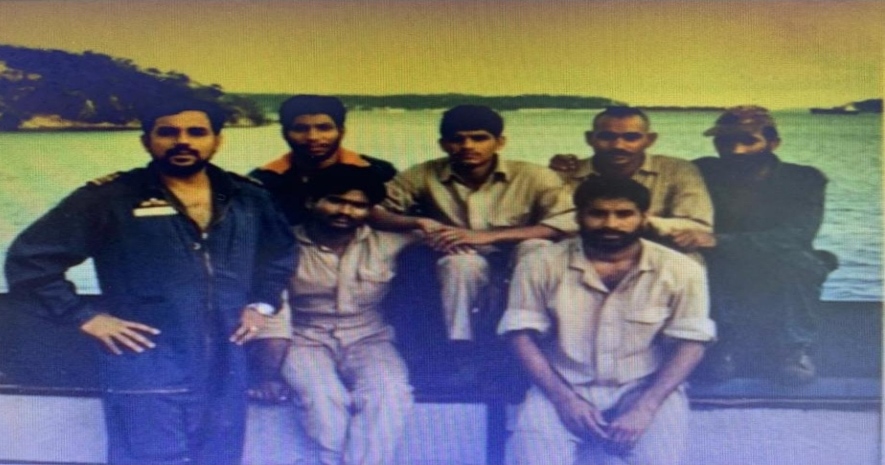
On 21 October 1987, just four days before our arrival on the island, MARCOS had successfully raided the LTTE Naval base at Guru Nagar jetty in Jaffna. They were launched from a LCU off Jaffna and had swum 12 km to the target with full combat load. Quietly in the dead of the night, the harbour full of boats and crafts (LTTE Naval Flotilla) was wired with mines and explosives. Swimming out, the MARCOS detonated the explosives, thus destroying the harbour. The enemy was quick and reacted immediately leading to a brief but intense fire fight. However the entire team of more than a dozen MARCOS led by Lt Arvind Singh returned to the LCU without a scratch.
Marine Commando Force or the MARCOS, are the Special Forces of the Indian Navy responsible for conducting special operations. The Force was raised in Feb 1987 with Rajiv Wadera as one of the pioneers. In fact we can take the history to 1955 when the Naval Diving School was established at Cochin. They began training Combat Divers also Clearance Divers. Though nothing much came out in the West during the 1971 War, Commander Samant and his boys achieved some wonderful results in East Pakistan.
Around mid Eighties Army SF too started sending their personnel to Cochin for Diving courses. By early1986, the Indian Navy started planning for the creation of a Special Forces unit on line of Army SF, capable of undertaking missions in a maritime environment, conducting raids and reconnaissance, and also Counter Terrorism operations. Three volunteer officers from the diving unit, which included Lt Arvind Singh were selected and underwent training courses with the US Navy SEALS and later went on training exchanges with the British SBS. Finally on 14 February 1987, the Indian Marine Special Force (IMSF) officially came into existence and the three officers were its first members. The IMSF was renamed as ‘Marine Commando Force’ in 1991.
In Sri Lanka during OPERATION PAWAN, the Indian Army SF detachments were routinely inserted into the Jungles for missions by helicopters through slithering/landing/low hover.
However at times, at night SF detachments were also inserted by embarking the naval LCUs and after reaching the designated island/coast area, disembarking into Gemini inflatables boats and moving on to the beaches. The Naval MARCOS then took back the boats to the LCU.
Towards last week of November87, entire 9 SF had arrived in Palaly and established its base at Vasavilan, bordering the Northern end of the Palaly Airbase. A major operation which had ended in the capture of area Sandilipai, an important LTTE stronghold had already been carried out. It had involved our Bravo Team going into the adjoining area and establishing heli landing area. The Commanding officer and his party had come along with us. At first light Alpha Team landed in two waves of helicopters amid a very‘ Warm‘ welcome from the LTTE followed by the landing of Charlie Team in a similar manner. All this time our Team was holding the enemy at bay. Two days later we too joined the rest of the battalion at Sandilipai and finally moved back to Vasavilan.
I still remember our first sea borne mission. The mission was allotted out of the blue to us just a few days after the capture of Sanndilipai, to 9 the new arrivals from the Pir Panjal Heights, with very limited exposure to things Naval and their seas. 10 SF were the experts in these type of operations along with 1 SF.
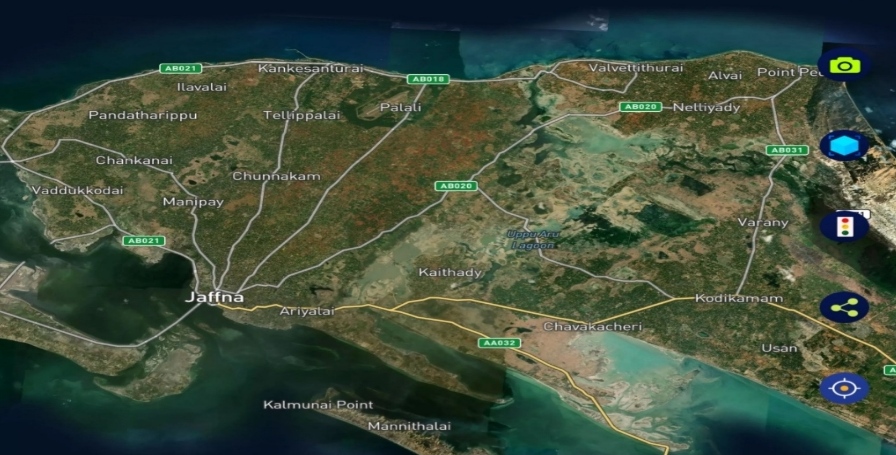
Wadera, Britto and self sat down for making an Outline Plan for recce in the LCU at Kankesanturai or the KKS harbour, the Sri Lankan Naval Base very close to Palaly. Then after some beer and lunch, I came back to the Air base. Towards mid night Britto went in the LCU to recce the coast off general area POINT PEDRO light house for our landing operation 24 hours later.
A few days later, this seaborne mission was to sanitize one of the coastal village near Point Pedro. This was going to be another major event involving all three teams. Once again our Bravo Team was going to be inserted first to secure the Beach Head.
After carrying out all preparations and some restless sleep, Bravo Team was the last to move out of Vasavilan, just before last light. Soon our vehicles were inside the KKS harbour. Finally after an hour our Team was asked to embark. The deck had been left for us to occupy, while the other two teams were already positioned below deck. After a while, with lots of bells ringing and announcements on the ship’s speaker and all other Mumbo Jumbo rituals (they appeared as such to us Pongos!!!!. Actually these are various drills, which we too do in the aircraft/hepters before the para jumps/slithering out.) the LCU started moving out of the harbour.
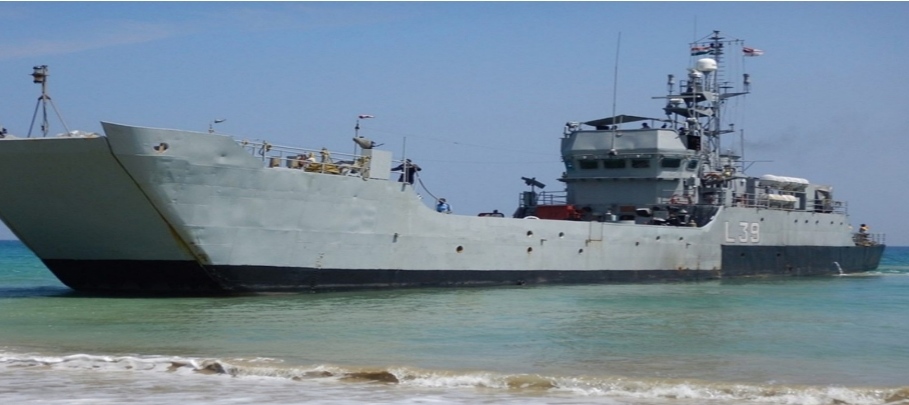
The Navy did its best to look after us. Our boys were served with hot tea and biscuits, before and after having their packed dinner which they were carrying. The LCU at first had gone out into the sea for quite some distance, it then started circling to move towards the landing area. There was some tension when one of the radars went ‘duff’ or some such term used by the Commanding Officer of the Ship. The Naval officer in charge of all IPKF Naval Operations in Jaffna Area was also on board, closely monitoring everything. He seemed to be more tensed up than us also. Even Wadera was snapped at by him, as ascertaining the general area for landing was taking time
Finally Wadera and Britto both confirmed the area. Then at 0200h in pitch dark Britto and Wadera were first to disembark with their party, followed by No 6 Troop. We disembarked by rope ladders onto the Geminies – six of them. Mine was number six. We began our silent move, each Gemini carrying two MARCOS and a squad of SF, following close behind the one in front. I could hardly make out the lead Gemini with my eyes, even when it was not more than50 m away. Thank God, the sea was as calm as a pond in summer. Probably Varuna was himself welcoming the representatives of Himalaya. Otherwise what havoc even a mildly rough sea or air turbulence (when in an aircraft) can cause is indescribable. In 1984, while being flown in a RAF C130 Hercules somewhere over, around and through the Vales of Scotland, I had faced this difficult situation. The turbulence was very rough indeed. The RAF personnel on board looked unconcerned, but the Royal Marine Commandos did look a bit uncomfortable. Though I, the lone representative of Indian Army on board, was ‘fighting’ desperately to uphold the IZZAT of our Parachute Regiment and SF, could do so only for about ten minutes.
Thereafter I just kept vomiting, thankfully into the vomit bag available in the aircraft and given to me, till I felt too weak to even sit!!! Though later I was told that most of them had gone through this kind of thing earlier.
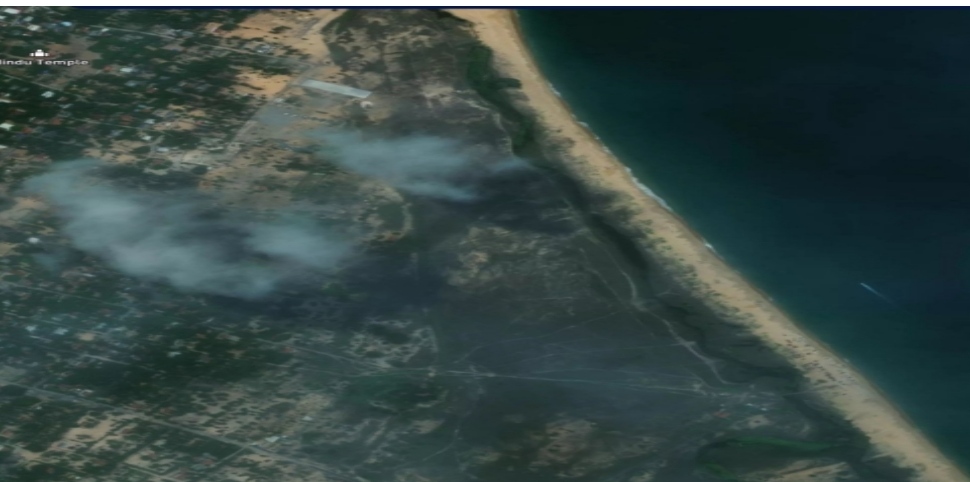
The Point Pedro Light house towards North (top of the pic). Landing was somewhere on this area
Suddenly the lead boat spotted something to seaward side …a very small boat. After observing it for a minute through the night vision, they closed on it and the lone chap in the boat was grabbed from behind. Naturally there was bit of chaos and due to this ‘chaos’, the lead boat had veered off Course and somehow I found my Gemini leading towards the beach. The MARCOS with me had been in the previous night recce. So they were confidently moving towards the beach, with others following or so I hoped. Now I was getting really tensed up, expecting a ‘hot reception’ from the looming beach in the front. I cautioned the men in my boat.
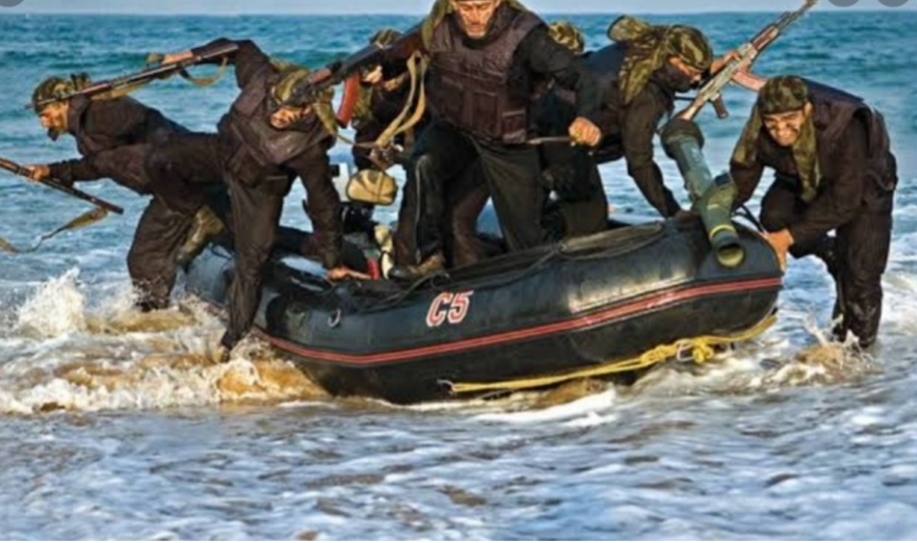
Representative picture: imagine doing it at night in pitch darkness on an unknown beach, with incoming fire expected any time!!
On touching the beach, I did exactly as briefed earlier by the MARCOS helmsman. Once on the beach, I started running forward towards a high ground around 50m ahead. After covering half the distance, I realized that no one was following me. So a bit dazed, I ran back. To my surprise, I found everyone was in the water. Anyway the boat was already going back and I helped my men on to dry ground and dashed back with them to the high ground. Once in position, with the LMG deployed, a quick scan of the surroundings through the night vision goggles, assured me that everything was OK. Then I went back to get the rest of my Troop and thankfully the remaining five Geminis started arriving one after the other.
After quickly discussing things with Britto, I rushed to my Troop position and started expanding the beachhead. With the beach head secured the arrival of Bravo Team was completed in next thirty minutes. The beachhead was further expanded and secured. Colonel Tej Pathak too landed with No 5 Troop itself and seemed to be very excited about the whole thing. On seeing him, I gave him a quick brief of the situation and the beach head size. He shook my hands and congratulated me. By now the other two teams had started arriving, while our team was in position facing the land side.
It was only later, we learnt that quite a few squads had ‘sea dips’, with one paratrooper even dropping his rifle into the Sea. If I do remember, our Phantom Colonel got the rifle retrieved by borrowing the diving kits from the MARCOS but using our SF Divers.
The Sri Lankan who was grabbed from his boat turned out to be just a fisherman, trying his luck with some fishing at midnight. He was from the nearby village and he was left free in the morning after the completion of our mission. We kept wondering what he must have felt when suddenly grabbed from behind at 0200h when out in the sea about two km from the coast !!!
Regarding toppling of the Gemini, soon as the boat touches the sand, people have to be quick enough to jump out and two chaps must turn the boat around. People were not fast enough and the next incoming wave was not only bigger but probably also big enough to capsize the boat (high tide time must be nearing). It was pitch dark, the sea was very calm but the mountain experts were confronting the sea for the first time. Then each chap was heavily loaded too for the mission.
As a specialised force, akin to Army SF, the MARCOS are responsible for conducting operations at both the strategic and the tactical level. MARCOS operations are usually conducted in support of naval forces, although they are also deployed for other tasks. Following the Army SF pattern, the responsibilities of MARCOS has evolved with time.
The naval SF has the competence to operate in all three medium….. sea, land, air. They are specially organised, trained and equipped for the conduct of special operations in a maritime environment. Personnel from unit are deployed round the clock from Kashmir for CI/CT ops to Somalia for anti-piracy operations. The unit has always been at forefront in providing diving/civil assistance during times of natural disaster.
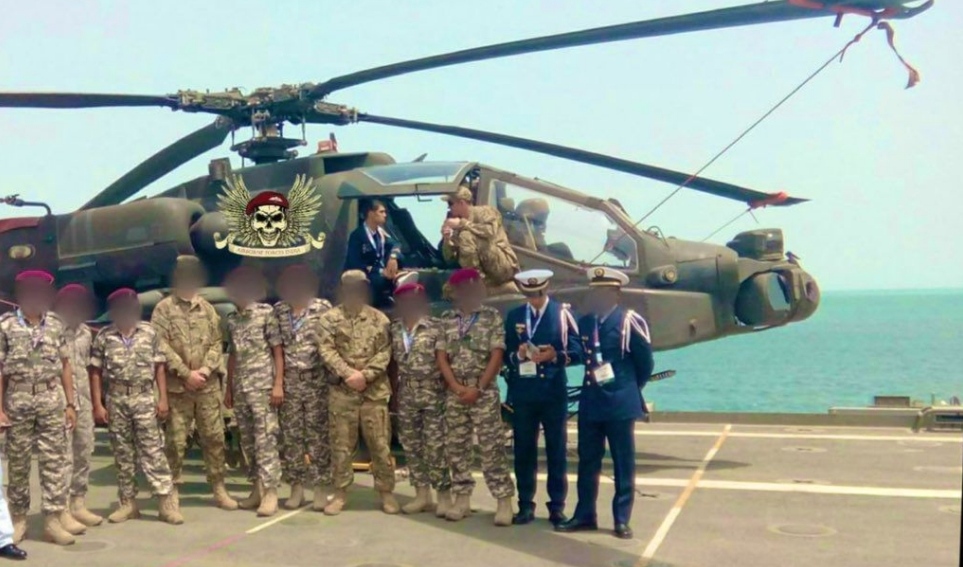
Primary tasks of MARCOS include:-
- Providing support to amphibious operations including beach recce and other pre assault tasks
- Special surveillance and amphibious reconnaissance operations.
- Clandestine operations inside hostile territory, including diving operations and special raids.
- Direct action to destroy enemy targets like ships and important offshore/inshore installations
- Hostage rescue operations.
- Counter-terrorism operations specially in maritime environment
- Asymmetric Warfare.
- Foreign Internal Defence.
Initially after raising, the first Unit got located under the Western Naval Command within INS Abhimanyu. When the second unit was raised, then a permanent base for MARCOS came up at Vishakhapatnam, the INS Karna on 12 Jul 2016. Currently the Force also operates from naval bases at Goa, Kochi and Port Blair. Some detachments have also been placed under direct Command of Armed Forces Special Operations Division (AFSOD).
Their training facility is located in Goa at the erstwhile Naval Academy. It is called the Naval Special Warfare Training and Tactical Centre. The exact strength of MARCOS is classified but we can certainly make an educated guess, going through the open sources available. By now it should certainly be between 1200 to 2000.
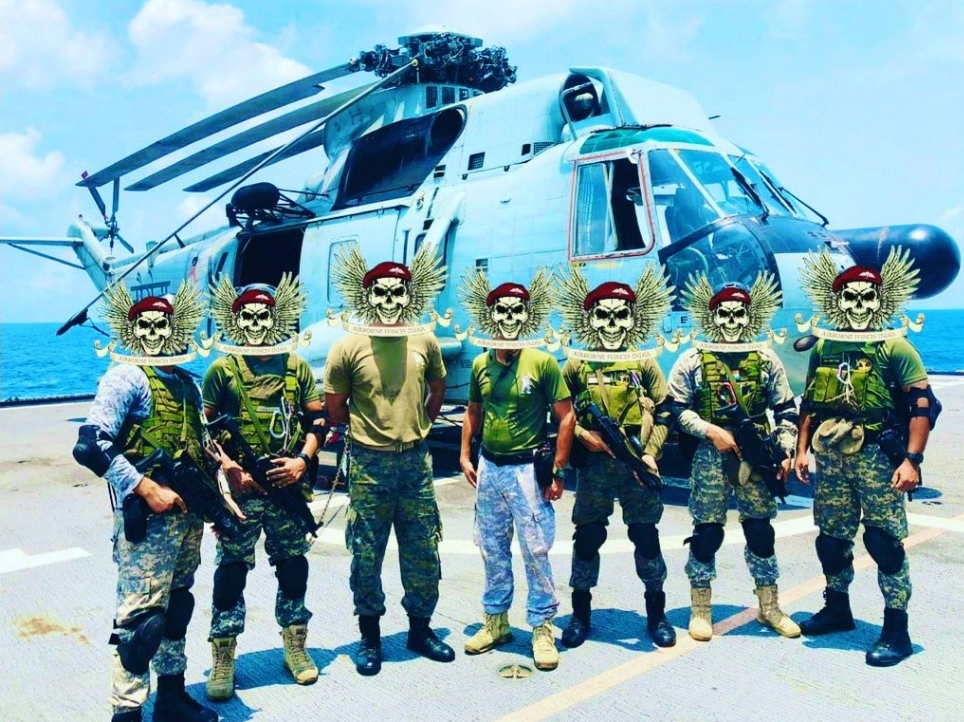
9 SF can very proudly state that since 1987 it has responded to every operational situation arising in the area of Northern Command and whenever required, even outside it. MARCOS from the Indian Navy have been in the forefront in similar manner
While still deployed in Sri Lanka, the MARCOS helped defending the democratic government of Maldives, when a coup was attempted against President Gayoom.
A group of 47 mercenaries of Sri Lankan Tamil group PLOT and ENDLF attempted to escape by sea with 23 hostages on a hijacked vessel, MV Progress Light after the successful intervention of Parachute Brigade in Male.
A contingent of MARCOS operating from Ratmalana Airfield on the outskirts of Colombo, boarded the ship and accepted the surrender of the militants and took them into custody and moved them to INS Godavari.
OP TASHA started in the aftermath of OP PAWAN, for security of Tamil Nadu Coast against LTTE activities was spearheaded by the versatile MARCOS. They even intercepted and destroyed several boats carrying weapons, explosives and contrabands.
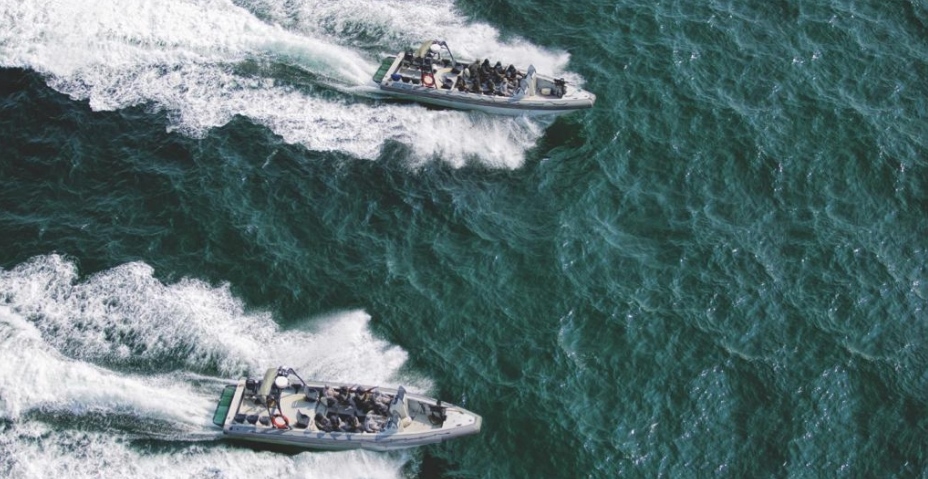
In Mumbai in 9/ 11 incident, MARCOS had been the first responder and reached Taj Hotel well in time. Had they intervened right away, then results would have been much better.
Due to red tapism the Maharashtra Government unnecessarily kept waiting for the arrival of the National Security Guard. In fact there is a need of proper legislation by the Parliament on such procedure to call in the military for anti terror operations.
MARCOS have been at the forefront of anti piracy operations in the Indian Ocean Region. Towards 1993 they were deployed off Mogadishu in support of Indian UN Mission in Somalia.
MARCOS provided the Maritime Special Operations support to the Naval Task Force. The famous action by MARCOS to prevent capture of an Indian merchant vessel MV Jag Arnav in November 2008 by Somali pirates in Gulf of Aden was classic. It established the writ of the Indian Navy in the Indian Ocean Region.
Again in December the same year, 23 Somali pirates were captured when they were trying to hijack an Ethiopian Vessel. The MARCOS had operated from INS Mysore, which was patrolling the area.
There are numerous other successful anti piracy operations where ships of other countries were rescued. This anti piracy operation is a continuing process in the entire Indian Ocean Region. Pirates are just not safe anymore within this region.
MARCOS have also been contributing in OPERATION RAKSHAK, the anti terrorism operation in Jammu and Kashmir. They have a permanent deployment in the Kashmir Valley in general and Wular Lake area in particular. Till date they have achieved impressive results keeping their deployed strength in mind.
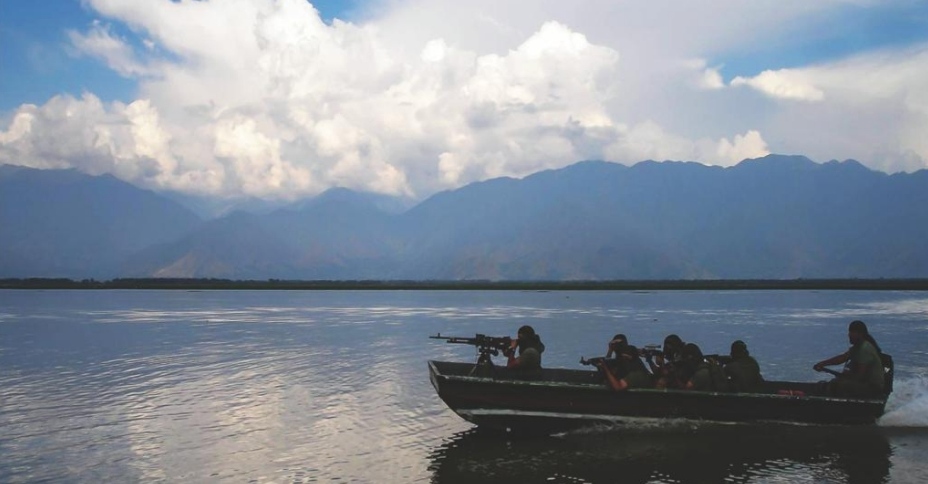
MARCOS in the Vale of Kashmir As per newspaper reports, MARCOS had been deployed along with the Army SF in Ladhak Sector too,post Galwan incident between the Indian Army and the Chinese Communist PLA.
One of the MARCOS operations, little talked about was in the aftermath of IAF downing a Breguet Atlantic Maritime Surveillance aircraft of the Pakistan Navy had intruded into Indian airspace, a month after the Kargil War on 10 Aug 1999.
The area of intrusion was in Rann of Kutch. The Pakistani aircraft was operating from Meheran Naval base. IAF MiG interceptors from Naliya air base had then taken off and had tried to contact the intruder as per international protocols.
However finally it had to be shot down as the intruder tried some abrupt maneuvers, at that time it was ten km inside India over Kori Creek. It was probably conducting a probe to sniff out our air defence radar emissions etc.
After the shoot down a team of MARCOS along with a few BSF personnel went to locate the debris site and tried to find and retrieve some important equipment. After reaching the crash site, the team spent two days to gather some of the items found on ground.
They also found debris trail going further West. Third night when they moved westwards, suddenly they realized that the town lights seen in the front could only be that of Badin City !! They had to spend the next day in situ, hidden carefully. Then in the evening started the move eastwards but only after leaving some clear ‘indications ‘ of their visit.
Apart from facing power disruption for several weeks the Power Corporation of Sindh had to replace several transmission towers and other equipment due to this visit.



